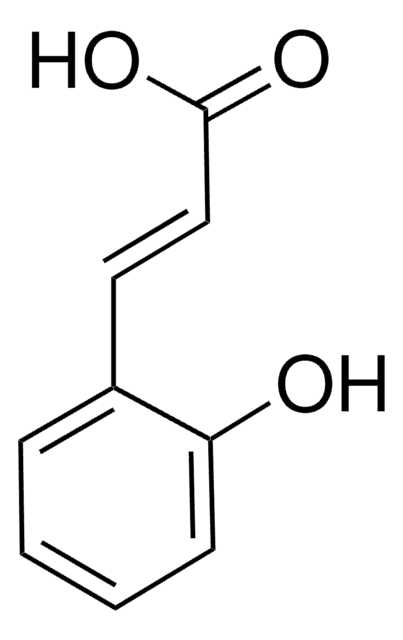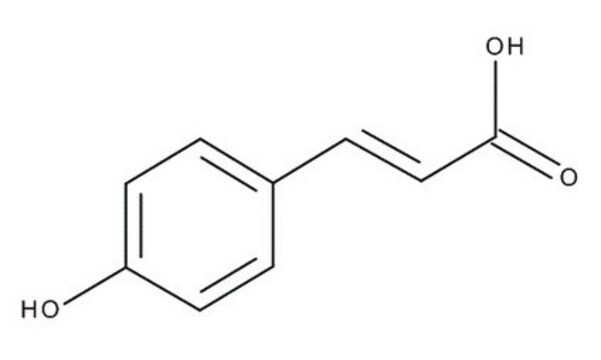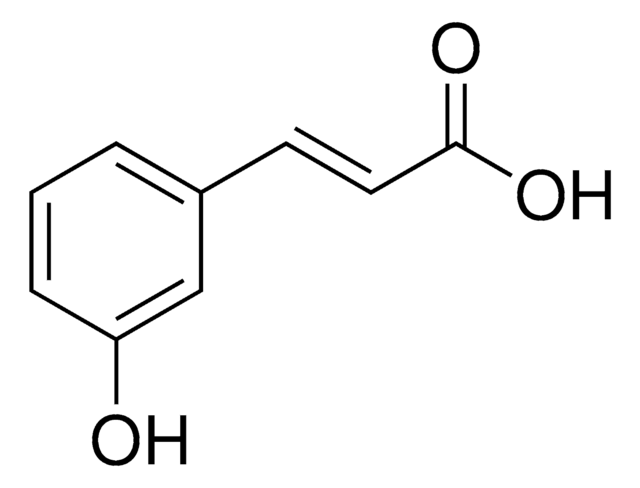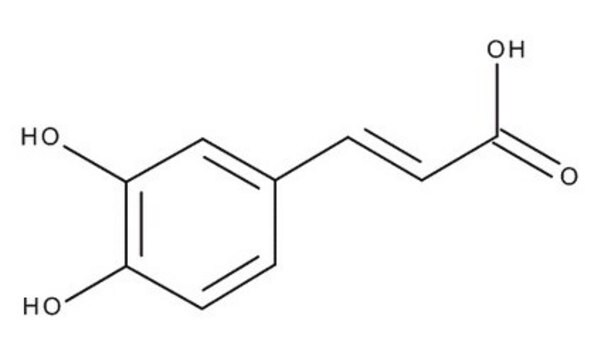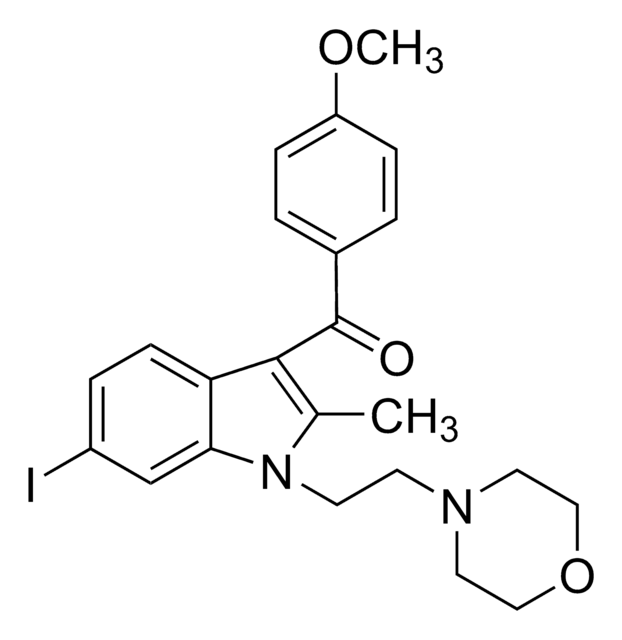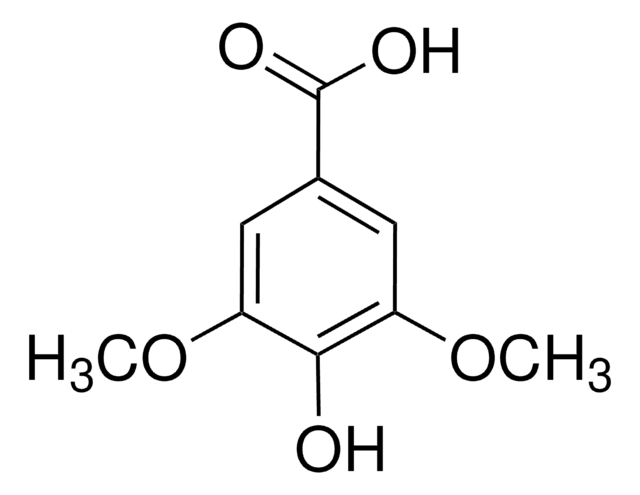すべての画像(1)
About This Item
化学式:
HOC6H4CH=CHCO2H
CAS番号:
分子量:
164.16
Beilstein:
2084229
MDL番号:
UNSPSCコード:
12352100
PubChem Substance ID:
NACRES:
NA.22
おすすめの製品
品質水準
アッセイ
99%
mp
193-195 °C (lit.)
SMILES記法
OC(/C=C/C1=CC=CC(O)=C1)=O
InChI
1S/C9H8O3/c10-8-3-1-2-7(6-8)4-5-9(11)12/h1-6,10H,(H,11,12)/b5-4+
InChI Key
KKSDGJDHHZEWEP-SNAWJCMRSA-N
類似した製品をお探しですか? 訪問 製品比較ガイド
関連するカテゴリー
シグナルワード
Warning
危険有害性情報
危険有害性の分類
Eye Irrit. 2 - Skin Irrit. 2 - STOT SE 3
ターゲットの組織
Respiratory system
保管分類コード
11 - Combustible Solids
WGK
WGK 3
引火点(°F)
Not applicable
引火点(℃)
Not applicable
個人用保護具 (PPE)
dust mask type N95 (US), Eyeshields, Gloves
試験成績書(COA)
製品のロット番号・バッチ番号を入力して、試験成績書(COA) を検索できます。ロット番号・バッチ番号は、製品ラベルに「Lot」または「Batch」に続いて記載されています。
この製品を見ている人はこちらもチェック
Alexis Eugene et al.
Biotechnology for biofuels, 13(1), 202-202 (2020-12-12)
Arabinoxylan in grass cell walls is acylated to varying extents by ferulate and p-coumarate at the 5-hydroxy position of arabinosyl residues branching off the xylan backbone. Some of these hydroxycinnamate units may then become involved in cell wall radical coupling
J Cabanes et al.
Biochimica et biophysica acta, 790(2), 101-107 (1984-10-23)
The inhibition by m-coumaric acid of oxidation of L-dopa by epidermis tyrosinase (monophenol,dihydroxy-L-phenylalanine:oxygen oxidoreductase, EC 1.14.18.1) is characterized by a prolonged transient phase. Kinetic data correspond to that for a postulated mechanism that involves rapid formation of a reduced enzyme-m-coumaric
Seigo Baba et al.
Life sciences, 75(2), 165-178 (2004-05-04)
Rosmarinic acid (RA) is contained in various Lamiaceae herbs used commonly as culinary herbs. Although RA has various potent physiological actions, little is known on its bioavailability. We therefore investigated the absorption and metabolism of orally administered RA in rats.
Antonia Nostro et al.
Natural product research, 26(22), 2132-2136 (2011-10-22)
This study reported the antimicrobial activity and phenolic content of natural site and micropropagated Limonium avei (De Not.) Brullo & Erben inflorescences. The minimum inhibitory concentration (MIC) and minimum bactericidal concentration (MBC) of ethanolic extracts were determined according to the
Yutaka Konishi et al.
Journal of agricultural and food chemistry, 52(21), 6418-6424 (2004-10-14)
It was previously reported that m-coumaric acid, m-hydroxyphenylpropionic acid (mHPP), and 3,4-dihydroxyphenylpropionic acid (DHPP) are major metabolites of ingested caffeic acid formed by gut microflora and would be transported by the monocarboxylic acid transporter (MCT). We have directly measured their
ライフサイエンス、有機合成、材料科学、クロマトグラフィー、分析など、あらゆる分野の研究に経験のあるメンバーがおります。.
製品に関するお問い合わせはこちら(テクニカルサービス)